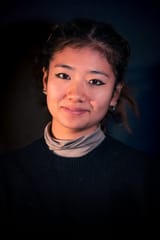Direct air capture - The real solution?
The promising technology of direct air capture is still in its early days

Direct Air Capture has been the talk of the town in recent weeks as the world’s largest DAC facility, located in Iceland’s Hellisheidi, opened for business last month. It may be a solution to our current climate crisis’s most pressing concern – reducing the amount of excess carbon dioxide being emitted into the atmosphere.
Named Orca, the newly opened DAC facility was built by Swiss startup Climeworks. The plant cost $10 - $15 million (£7.3 – £11 million) to build and took four years to complete. It is a collaborative effort with Icelandic company Carbfix, which has developed the technology for diverting the captured CO2 back into the ground, where it will take about two years to mineralise and be stored away forever. All of this is powered by the neighbouring Hellisheidi geothermal power plant, the third largest in the world.
Direct Air Capture works by filtering in ambient air using large fans. It is a much more energy-costing process than capturing factory or power plants emissions straight from the source – this is because these emissions are already enriched with CO2. In contrast, ambient air contains only 0.04% carbon dioxide. The filtered air is treated with a chemical medium that forms a carbon-rich salt, which is subsequently converted into calcium carbonate. This is heated to 100 degrees to produce CO2 that can be collected, and this is where Carbfix’s role of injecting the captured carbon dioxide back into the ground comes in.
To prevent global temperatures from rising above 1.5 degrees in the coming decades and avoid irreversible climate destruction, the IPCC has stated that there must be a “large-scale deployment of carbon dioxide removal measures”. Direct Air Capture could allow global emissions to remain at higher levels for a long time into the future, buying us some time to dismantle the fossil fuel industry. Of course, there are other methods of removing CO2 from the atmosphere – planting trees and growing forest space being the most obvious ones. But these methods are time and space consuming, and in the case of the climate emergency, time is of the essence.
However, Direct Air Capture technology is still in its early days. Despite being the world’s largest DAC facility, Orca’s CO2 capturing abilities are limited to 4000 tons a year. This is a minuscule fraction of the CO2 emitted by fossil fuels and industries today, which was 34 billion tons in 2020. 4000 tons amounts only to the carbon dioxide emissions of 250 American households. This technology is also extremely costly – Climeworks offers individuals and companies the opportunity to purchase carbon offsets at a steep price of $1,200 (£881) per CO2 ton.
This may seem like a dishearteningly small outcome for an extortionate cost, but it certainly is a tentative step in the right direction for the future of this type of technology. Climeworks claims that by 2035, the cost could be reduced to as low as $100 (£73) per ton. So although there is still a long path ahead regarding cost reductions and efficiency improvements, Direct Air Capture offers us a very promising solution to our pressing need for negative emissions technologies.










